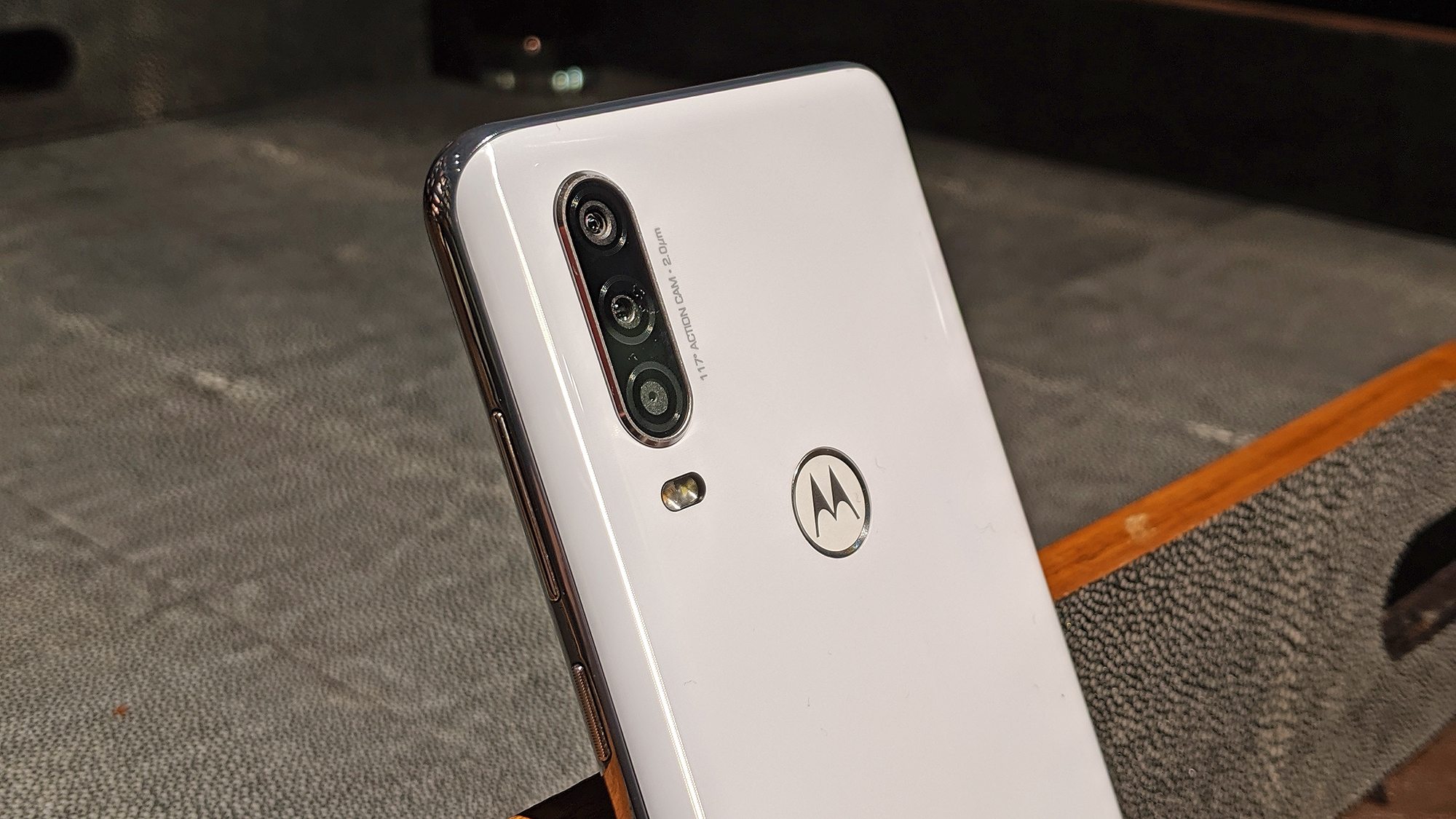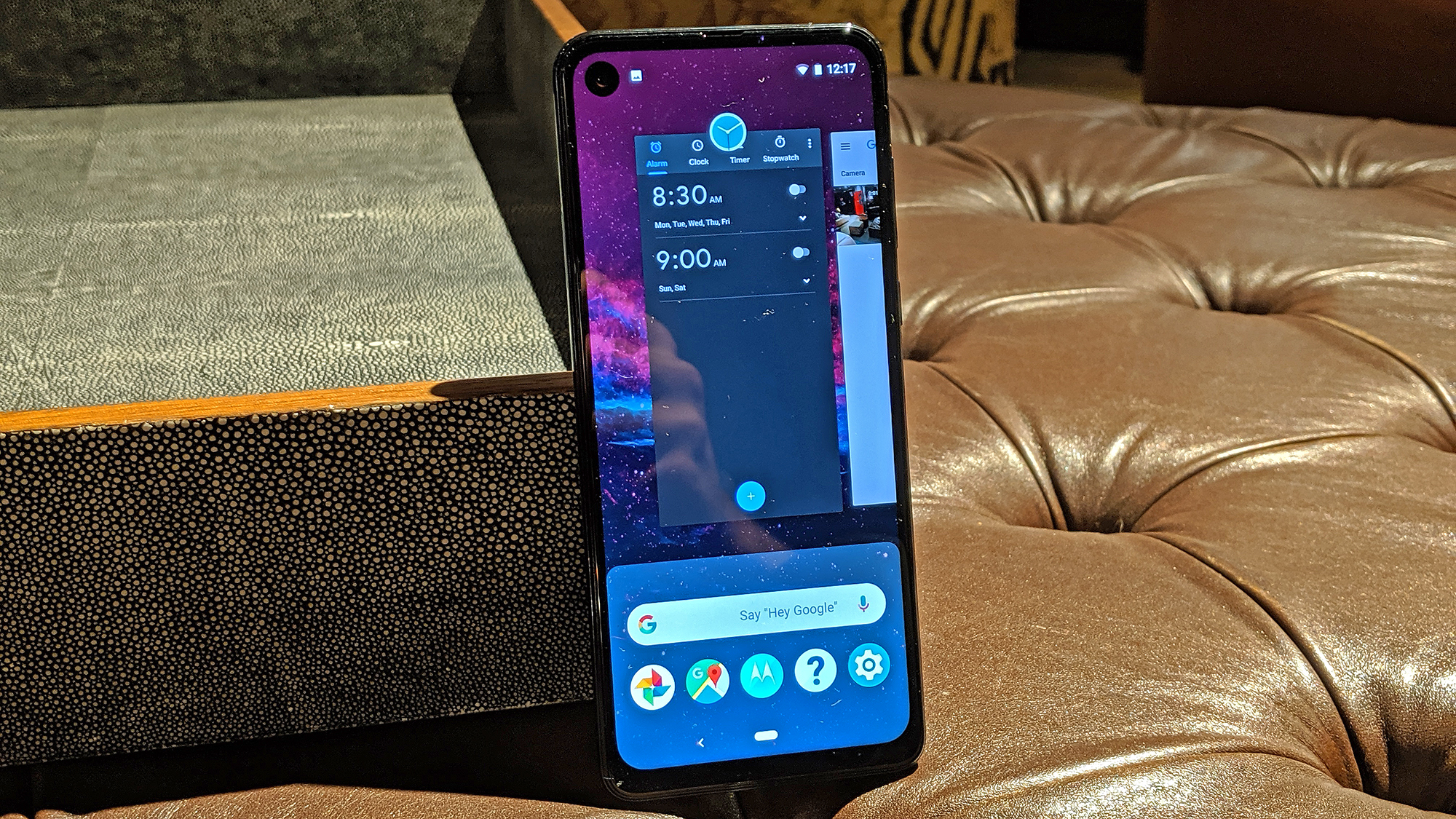Why you can trust Tom's Guide
While many phone makers are working to bring flagship-quality photography to lower-priced handsets, few have extended the same focus to video. And that’s quite odd when you think about it, because these days, we capture video with our phones as often — if not more so — than we do still photos.
Motorola hopes to address that oversight with its latest midrange handset. Called the Motorola One Action, the new device has a triple-lens system at the rear that’s been optimized for video, as well as an extra-wide 6.3-inch display roomy enough to fit the entirety of the content you capture.
The Motorola One Action is available now for $349 unlocked from Best Buy and Motorola's website. Amazon offers a custom version with Alexa push-to-talk support built in, currently on sale for $289, while B&H is offering the device for a limited-time discount of $299.
Priced competitively against budget champions like Motorola’s own G7 Power, the Nokia 7.1, Pixel 3a and Samsung Galaxy A50, the One Action could carve out a video-centric niche for itself. Here are our first impressions ahead of our full review coming soon.

All about video
The Motorola One Action isn’t the first (relatively) cheap phone with a trio of cameras on the back; the recently-launched Galaxy A50 again springs to mind. That said, I can’t recall another device that’s used triple shooters quite the way Motorola’s does.
The main camera, backed by a 12-megapixel sensor and ƒ/1.8 aperture lens, is boosted by a 5-MP depth sensor for shallow depth-of-field photography. But the third lens, rated at 16 MP, is used exclusively for video. What’s more, it has an ultrawide, 117-degree field of view, and utilizes pixel binning to better expose low-light recordings.
Dubbed the Action Camera, Motorola envisions this lens being well-suited for capturing and sharing your surroundings. Zoom out of the standard, 78-degree perspective, and the feed within camera app will automatically shift to that wider vantage point, allowing you to include more in the frame. Pricier phones with dedicated ultrawide lenses already do this, though it’s nice to see this sort of functionality arrive in a more accessible device.
Get instant access to breaking news, the hottest reviews, great deals and helpful tips.

Still, I’m concerned whether third party apps will actually be able to utilize the full scope of the Action Camera. On the Pixel 3, for example, pinching to zoom out when taking a selfie (or selfie video) in Snapchat doesn’t switch to that phone’s secondary, wider-angle lens the same way it does in Google’s own camera app.
This isn’t Motorola’s fault — rather, it’s a limitation of Android that app developers haven’t been able to take advantage of the myriad hardware and software enhancements phone makers bake into their imaging stacks. Google is developing a tool called CameraX that’s designed to bridge that gap. However, until CameraX is widely adopted, companies like Motorola that aspire to have customers use their phones' cameras in new and interesting ways will continue to meet resistance from apps like Instagram and Snapchat, that have little incentive to keep pace.
That would be a shame, too, since Motorola is doing some innovative and useful things on the video capture front. A small, yet critical new feature is the ability to record landscape, 21:9 video on the Motorola One Action even when holding the device in a portrait orientation. In these instances, the camera software simply rotates what it’s capturing by 90 degrees. It’s a brilliant little trick, because holding your phone right-side-up makes for significantly easier for one-handed operation.

Premium-looking design, sorta-premium hardware
Camera aside, the Motorola One Action feature other noteworthy touches. The large 6.3-inch, 21:9 LCD display extends all the way to the top edge of the glass, and incorporates a front-facing camera within the screen, much like Samsung’s Galaxy S10e and its Infinity-O display. Unfortunately, the bezel around the camera lens is quite thick, which in turn makes the status bar pretty large — so it’s not quite as seamless an integration as you may have seen on pricier handsets.
The Motorola One Action is crafted from polycarbonate all around, though the plastic does a decent job masquerading as glass when you hold the device in your hand. There’s a fingerprint sensor on the back, and the phone will be offered in three colors: Denim Blue, Pearl White and — outside of North America only — Aqua Teal.

Inside the phone beats not one of Qualcomm’s chipsets, but a Samsung-sourced Exynos 9609 CPU. This silicon is comparable in power to the Exynos 9610 in the recently-released Galaxy A50, and likely just shy of the Pixel 3a’s Snapdragon 670 in terms of raw grunt. That chip is mated to 4GB of RAM, and Motorola has generously included a whopping 128GB of storage onboard. The latter can be expanded by up to another 512GB with the use of a microSD card.
While the Motorola One Action ships with Android 9 Pie, Motorola has decided to forgo Android One software for the North American configuration. (The device Motorola supplied us to photograph was a European model, which is why it has an Android One logo on the back.) For this reason, the phone will only see one major software update during its lifespan, to Android 10, likely sometime in 2020. It also probably won’t receive security updates on the same monthly basis as Android One devices do.
| Motorola One Action specs | Row 0 - Cell 1 |
| Price | $349 |
| Display | 6.3-inch LCD (2520x1080) |
| CPU | Samsung Exynos 9609 |
| RAM | 4GB |
| Storage | 128GB |
| microSD Slot? | Yes, up to 512GB |
| Rear cameras | 12 MP main (ƒ/1.8); 5 MP depth; 16 MP video-only ultrawide (ƒ/2.2) |
| Front cameras | 12 MP (ƒ/2.0) |
| Battery | 3,500mAh |
| OS | Android 9 Pie; Android One outside North America only |
| Colors | Denim Blue, Pearl White, Aqua Teal |
| Size | 6.3 x 2.8 x 0.36 inches |
| Weight | 6.20 ounces |
While Motorola made it clear to us that the shift away from Android One in this instance doesn’t mean the company will never build another Android One device again, it is nevertheless disappointing. Motorola’s typical Android front end is already borderline identical to stock Android, so the user experience is unlikely to suffer much there. However, the loss of long-term support is concerning.
In fact, you could argue that the North American variants of the One Action will have shorter lifespans than their counterparts overseas, as a consequence of the lack of updates. It also doesn’t help that Motorola couldn’t provide us with a convincing reason for turning away from Android One, simply stating that the company "decided to test how [the phone] performs without Android One and re-invest taking into consideration [its] consumer’s needs."
Outlook
While it’s nice to see Motorola build out its budget range in a new direction with the Motorola One line, there are a few peculiarities with the One Action that give us pause.
We like the dedicated ultrawide video camera and how the phone's design evokes that of pricier handsets. We also like the specs, which look to be in line with other midrange offerings. Yet Motorola distancing itself from Android One could be detrimental to its users, and we’re interested in seeing how the Action Camera plays with third-party Android camera apps.
At $349, the Motorola One Action is hitting that sweet spot among budget phones right now. If you're looking to save big on your next handset, it should be on your radar. Stay tuned for our full review soon.
Adam Ismail is a staff writer at Jalopnik and previously worked on Tom's Guide covering smartphones, car tech and gaming. His love for all things mobile began with the original Motorola Droid; since then he’s owned a variety of Android and iOS-powered handsets, refusing to stay loyal to one platform. His work has also appeared on Digital Trends and GTPlanet. When he’s not fiddling with the latest devices, he’s at an indie pop show, recording a podcast or playing Sega Dreamcast.

